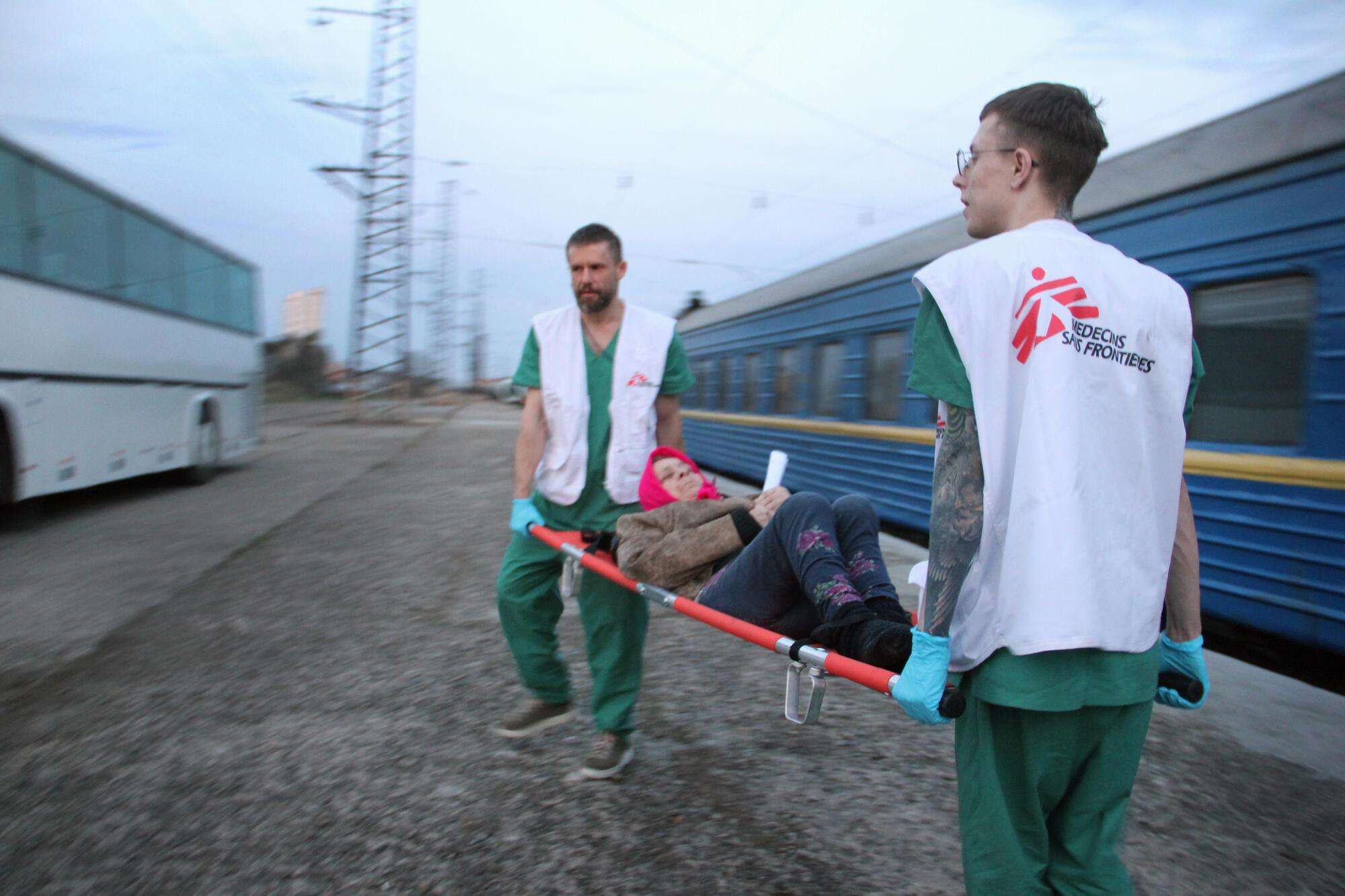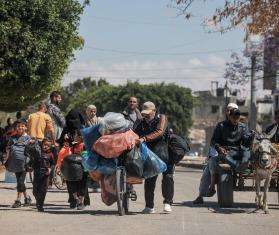“The severity, scale, and speed of the war in Ukraine have created simply enormous needs and suffering,” said Dr. Joanne Liu, an experienced pediatrician and member of the Doctors Without Borders/Médecins Sans Frontières (MSF) emergency response team who recently returned from Ukraine.
“It is clear that the Ukrainian medical system is robust and its capacity to rise to the challenge is impressive,” said Dr. Liu, who visited Ukrainian hospitals to help assess their needs and discuss how MSF can help. “The best thing we can do is listen closely and understand the specific areas where our support can provide real added value. We have identified several key areas where our humanitarian and medical support can be of real, practical, and sometimes directly lifesaving benefit.”
Emergency medical supplies
From the start, there was a clear need to get the right medical supplies to the right hospitals as quickly as possible. This began with urgent calls received from hospital staff close to frontline fighting and bombing who mostly needed surgical, trauma, and wound care medicines and supplies. Lately the scope of this aid has widened to include medicines for diseases such as asthma, hypertension, HIV, hypothyroidism, and tuberculosis.
MSF opened a major distribution warehouse in the western city of Lviv and subsequently opened other warehouses in other locations in Ukraine.
To date, we have brought nearly 250 tons of medical and relief supplies into Ukraine, much of it already dispatched to hospitals and health centers or to the Ministry of Health for onward transport to the places where it is needed most. Moving supplies around a country at war is not easy, but our teams have found the Ukrainian Railways to be invaluable in this endeavor.
We have also brought in five shipping containers filled with thermal fleece blankets, sleeping bags, warm clothes, and hygiene items like toothpaste, toothbrushes, soap, and towels and given them to local civil society organizations in Lviv to distribute to people arriving in the city from elsewhere in Ukraine or making their way towards the country’s borders. We have also distributed relief essentials in Kyiv, Kharkiv, and other locations.
Medical train referrals
On April 1, MSF completed our first medical train referral, taking nine patients who had been wounded in or near Mariupol from hospitals in Zaporizhzhia to hospitals in Lviv, transporting them on a two-car train kitted out as a basic hospital ward with a team of nine MSF medics on board.
Three further referrals by this train were made from hospitals close to front lines of the war in the Donetsk and Luhansk regions. A total of 114 patients have been medically evacuated to date, along with their family members. Further medical referrals by train are planned as the urgent requests from hospitals in the east continue to grow, while a larger and more highly medicalized train is being prepared for use. However, attacks like the train station missile strike in Kramatorsk on April 8 imperil further medical evacuation efforts.
Mass casualty training and trauma care
Distribution of supplies is not the only way MSF is working with the Ukrainian medical system to provide aid where it’s needed most. “When a hospital receives many patients at one time, we call it a mass casualty situation: When you don’t have enough resources and the patients have too many needs,” said Barbara Maccagno, MSF emergency medical coordinator in Ukraine.
“One of the most effective ways to save as many lives as possible is to have systems to help you quickly triage the most severe patients who need to be treated right away, and the patients who are less severe and who can wait a bit longer. It can be learned quite easily, but it does have to be practiced, as it is different from the usual way that hospital admissions work,” said Maccagno.
MSF has conducted these mass casualty trainings in hospitals in Berehove, Bila Tserkva, Dnipro, Kharkiv, Kyiv, Lviv, Mukachevo, Odesa, Orikhiv, Vinnytsia, Zaporizhzhia, and in hospitals in and around Zhytomyr.
Among the MSF training teams are experienced war-trauma surgeons who have given additional hands-on practical training in surgical techniques for the extraction of bullets and shrapnel and wound cleaning.
Attending to less-visible needs
Before the war started, MSF was treating tuberculosis patients in Zhytomyr. We will continue to seek ways to support them in their treatment, though this is challenging with people displaced by the conflict. In Kyiv, we have established a telephone hotline for people with non-communicable diseases, which can be used by elderly and vulnerable individuals to get their medication delivered at home. In Kharkiv we are running mobile clinics for people sheltering in metro stations, many of whom are suffering stress and psychological trauma due to the war.
In Chernihiv, we provided a substantial donation of medical supplies to one of the city’s hospitals. We have also set up mobile clinics in the city and in neighboring villages to respond to health needs.
Our teams are also starting to provide mental health support to people who have fled areas of more active fighting and gathered in Kyiv, Vinnytsia, and Berehove or are in transit through Zaporizhzhia. In and around Dnipro, we are providing essential relief items for people who escaped Mariupol and the Donetsk region.
Areas with active warfare
The greatest needs are undoubtedly in places with active warfare that our teams cannot reach. Civilians trapped in besieged cities need safe passage to locations of their choice. Humanitarian supplies must be allowed to reach areas where civilians are in dire need. Civilians must be protected under the rules of war and international humanitarian law, in all places and at all times.
Around Ukraine’s borders
More than four million refugees have fled Ukraine for neighboring countries, according to United Nations High Commissioner for Refugees (UNHCR). In most of these countries, there is massive solidarity to welcome and provide assistance for Ukrainians, and we do not intend to duplicate these activities. In countries bordering Ukraine, our teams are running clinics providing medical care and mental health support at border crossings and sometimes on both sides of the border; we have made donations of medical supplies; and we are supporting local civil society groups, for example by training them in psychological first aid.
While it is heartening to witness the solidarity shown to Ukrainian refugees by individuals, we note with distress that the governments of EU member states continue to demonstrate strongly repressive approaches to safe passage for refugees of other nationalities arriving in Europe. We urge safe passage and dignified reception to be extended to all people arriving in Europe as migrants, asylum seekers, or refugees, wherever they arrive and by whatever means.





